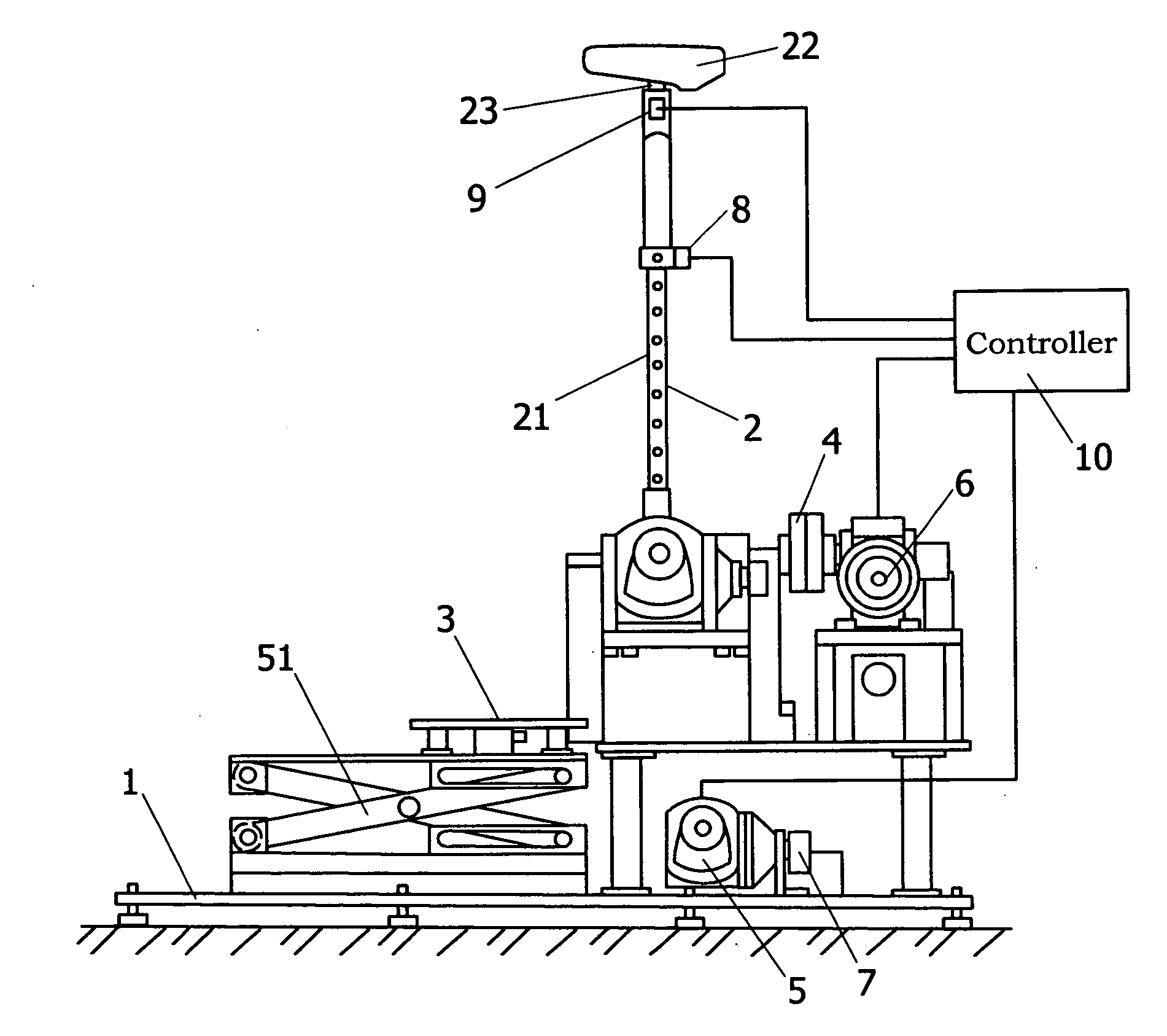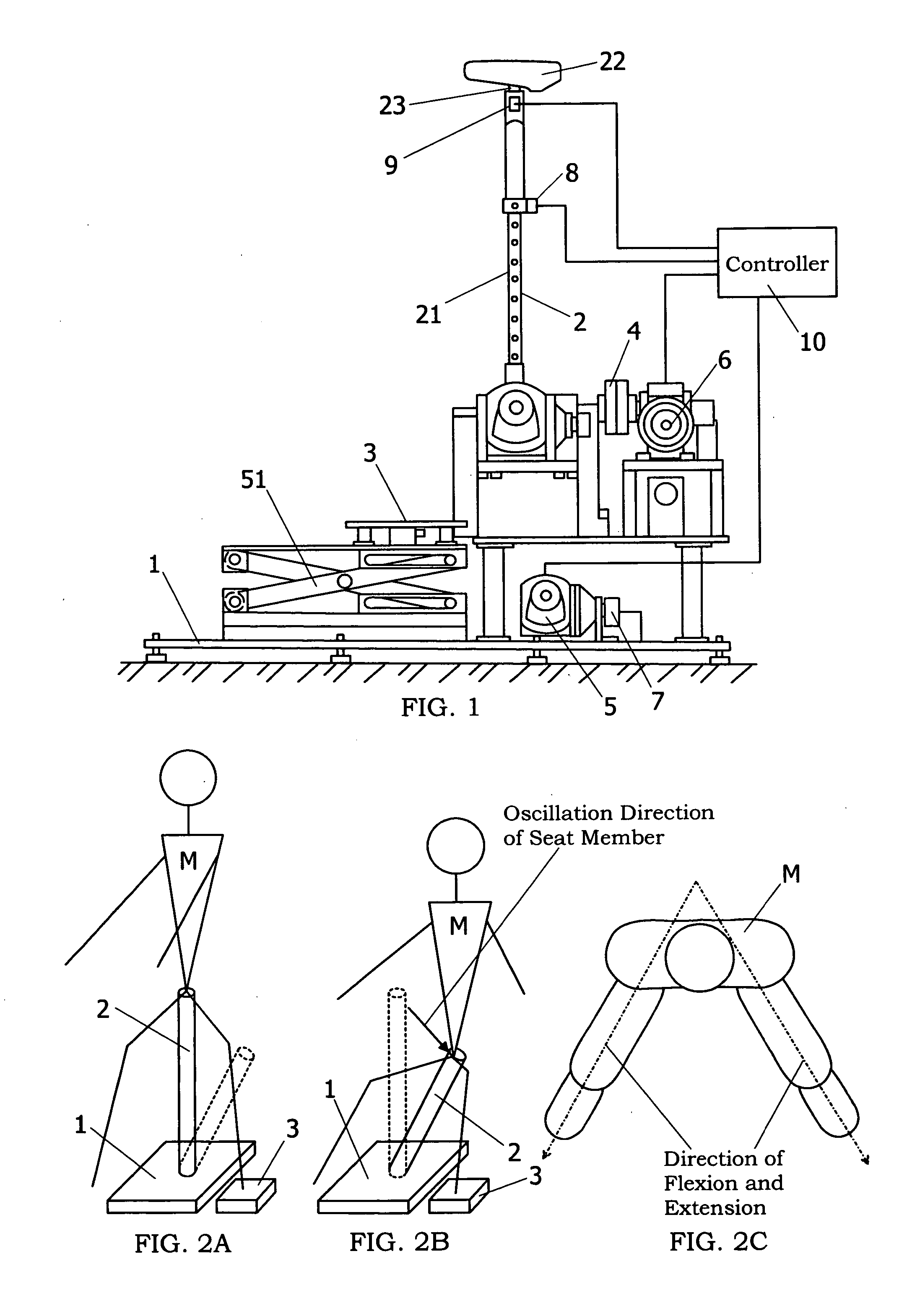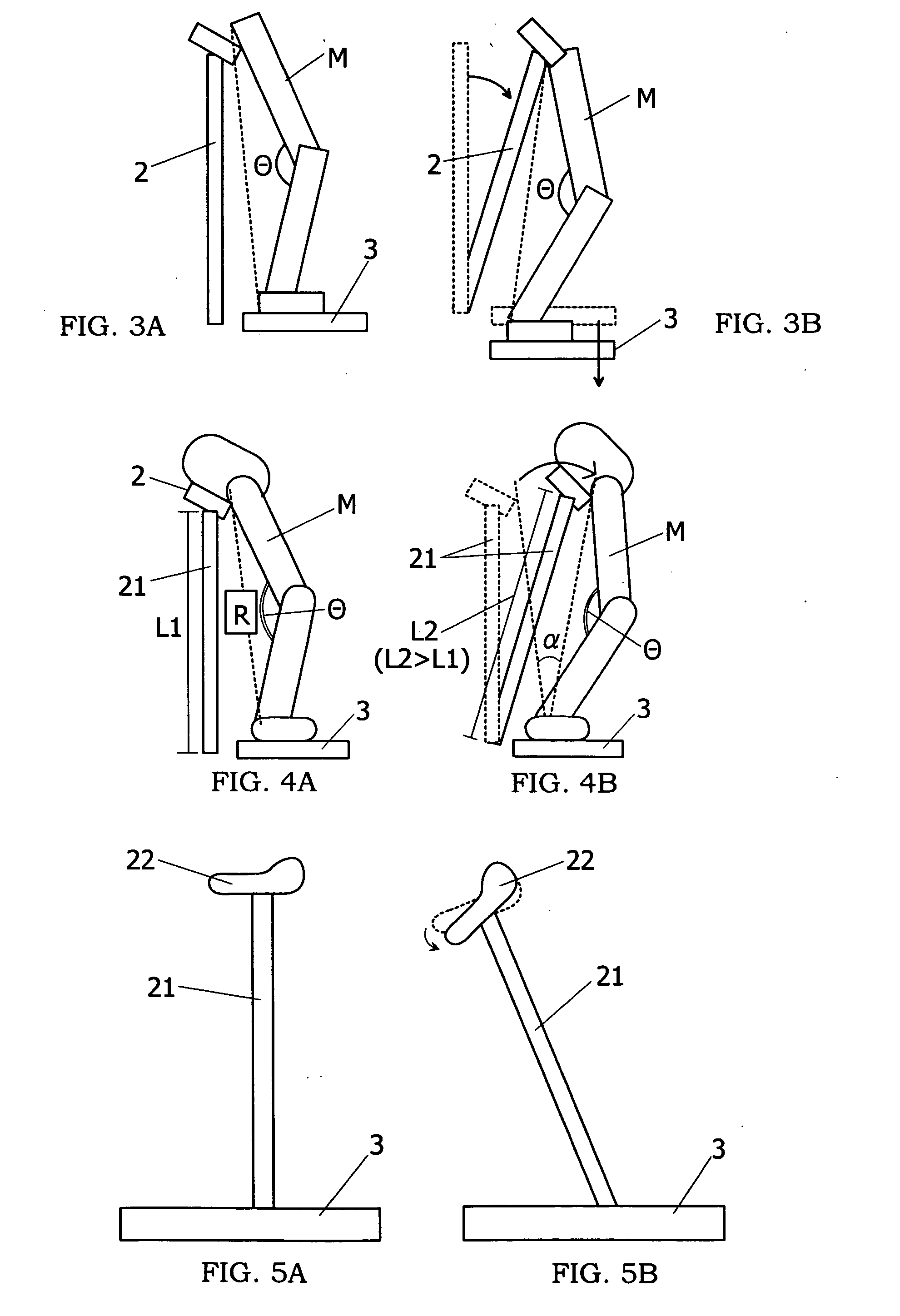Leg portion training device
a training device and leg portion technology, applied in the field of equipment, can solve the problem of limited direction of applying load, and achieve the effect of effective contributing to the prevention of lifestyle-related diseases
- Summary
- Abstract
- Description
- Claims
- Application Information
AI Technical Summary
Benefits of technology
Problems solved by technology
Method used
Image
Examples
first embodiment
[0063] As shown in FIG. 1, the leg training equipment of this embodiment has a base 1 fixed on a floor surface, a seat member 2 for supporting a hip of a user, and a pair of footplates 3, on which the user's feet are placed. The seat member 2 and the footplates 3 are mounted on the base 1 through a coupling mechanism 4, 5. Motors 6, 7 are respectively connected as drive units to the coupling mechanisms 4, 5, and controlled by a controller 10. The motor 7 is provided to each of the footplates 3.
[0064] The seat member 2 is provided with a post 21, a saddle disposed at the top end of the post 21 to support the user's hip, and a joint portion 23 for joining the saddle with the post to provide parallel and rotational movements of the saddle relative to the post. The saddle is configured in such a triangular shape that its forward end portion (front side of the user sitting on the saddle 22) has a narrower width than the rearward end portion in a top plan view. The saddle 22 may be confi...
second embodiment
[0139] As shown in FIG. 21, this embodiment is directed to a leg training equipment for allowing the user to voluntarily perform a leg training without using any drive unit. That is, in the first embodiment, the motors 6 to 9 are used as the drive unit, so that the user passively receives the leg training without voluntarily performing exercises. In this embodiment, a seat member 2 and a footplate 3 are respectively coupled to a base 1 through coupling mechanisms 4, 5 without using the drive unit. The coupling mechanism 5 for coupling the footplate 3 to the base 1 provides an up and down movement of the footplate by use of a pantograph 51, as in the case of the first embodiment. As to the seat member 2, a post 21 is retractable to adjust the position of a saddle 22 in a height direction, and the saddle 22 connected to the post 21 can be inclined in a forward and backward direction about an (one) axis extending in a left and right direction. As in the case of the first embodiment, th...
third embodiment
[0144] In a leg training equipment 1 of this embodiment, a footplate 3 can be moved in only an up and down direction, and a distance between a bottom end portion of a seat member 2 and the footplate 3 is kept constant. That is, as shown in FIGS. 24A and 24B, by forming guide apertures 3a in four corners of a plate-like footplate 3, and inserting four guide pins 3b projecting on a base 1 into the guide apertures, the footplate can be moved in only the up and down direction. In this case, when a link body 70 is fixed to the seat member 2 and the footplate 3, the seat member can not be inclined against the base 1. Therefore, the link body 70 has hinges such as ball bearings at its opposite ends, which are engaged with the seat member 2 and the footplate 3, so that both of an angle between the seat member 2 and the link body 70 and an angle between the footplate 3 and the link body 70 become changeable. Thus, the footplate 3 can be moved in the up and down direction according to the osc...
PUM
 Login to View More
Login to View More Abstract
Description
Claims
Application Information
 Login to View More
Login to View More - R&D
- Intellectual Property
- Life Sciences
- Materials
- Tech Scout
- Unparalleled Data Quality
- Higher Quality Content
- 60% Fewer Hallucinations
Browse by: Latest US Patents, China's latest patents, Technical Efficacy Thesaurus, Application Domain, Technology Topic, Popular Technical Reports.
© 2025 PatSnap. All rights reserved.Legal|Privacy policy|Modern Slavery Act Transparency Statement|Sitemap|About US| Contact US: help@patsnap.com



